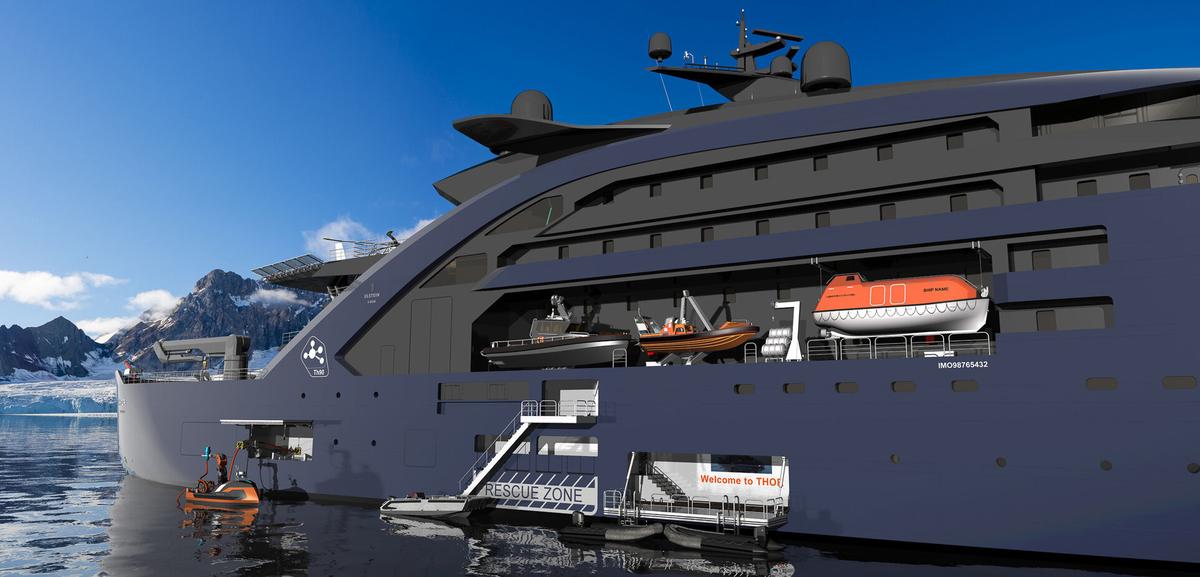Norway-based marine group Ulstein has introduced Thor, its concept design for a 149-m (489-ft) replenishment, research and rescue (3R) ship powered by a thorium Molten Salt Reactor (MSR) that can be used to recharge battery-driven cruise ships at sea.

As environmental consciousness grows, ecotourism has become a booming business, but with the desire to visit exotic environments comes the need to protect these often under-threat locations. This is particularly urgent for cruise ships going into the polar regions, which are notoriously fragile.
Polar cruises not only have to deal with the intrinsic needs to protect the Arctic and Antarctic coastal regions, but also meet increasingly stringent government regulations and pressure from environmental groups. On top of this, icy seas make refueling ships away from port difficult, expensive, and potentially damaging to the surrounding area.

To overcome this, Ulstein is looking to the multi-purpose Thor, which would not only be able to operate in polar seas to carry out research and rescue missions independent of refueling, but could also recharge the next generation of electrically propelled cruise ships that run off large battery banks.
Since Thor is designed to recharge these future cruise ships, Ulstein is also working on the Sif concept, which is a 100-m (330 ft), 80-passenger, 80-crew battery-powered Ice Class 1C vessel that could be recharged at sea by the nuclear-powered Thor.
Thor would use a portable Generation IV MSR thorium reactor, which is fueled by thorium rather than uranium. In an MSR, the thorium is dissolved into a mixture of salts heated to up to 700 °C (1,292 °F). This mixture acts as both a coolant and the container for the thorium. Because it is a molten salt reactor, it is under atmospheric pressure and uses passive cooling systems that can operate in an emergency shutdown. This molten mix also means that the reactor can be refueled and cleansed through a chemical loop.

According to Ulstein, it would crank out enough power for four expedition cruise ships at the same time and its nuclear reactor wouldn’t need refueling for the life of the vessel. Both Thor and Sif are based on Ulstein’s X-BOW ship design and their electric propulsion allows for silent cruising. Along with the reactor, Thor’s design has helipads, firefighting gear, rescue booms, workboats, laboratories, and a lecture lounge.
“MSRs have enormous potential for enabling clean shipping,” said Jan Emblemsvåg, Professor at the Norwegian University of Science and Technology, an expert in the field of Thorium and nuclear power generation. “There is so much uncertainty over future fuels, but here we have an abundant energy source that, with the right approach, can be safe, much more efficient, cheaper, with a smaller environmental footprint than any existing alternative. From my perspective, I see this as the most viable, and potentially the only credible, solution for a zero-emission fleet that can operate under commercial terms and cost levels. The ‘Thor’ concept is exactly the kind of innovation we need for sustainable success at sea.”
The video below introduces Thor.
Thor
Source: Ulstein







